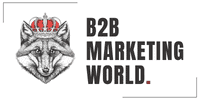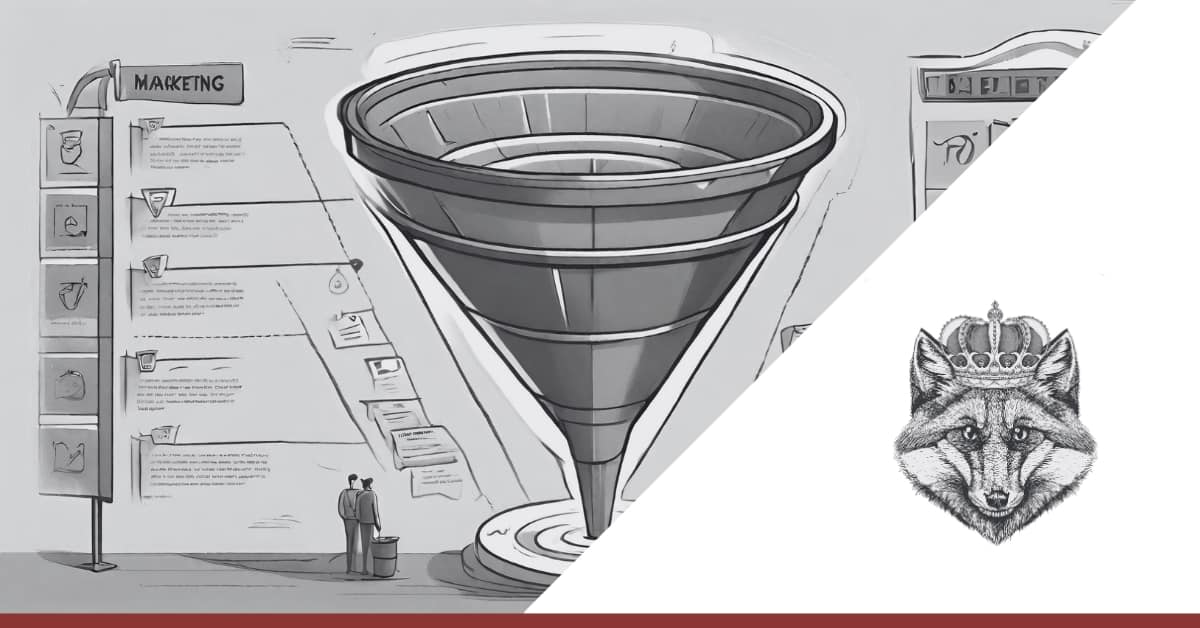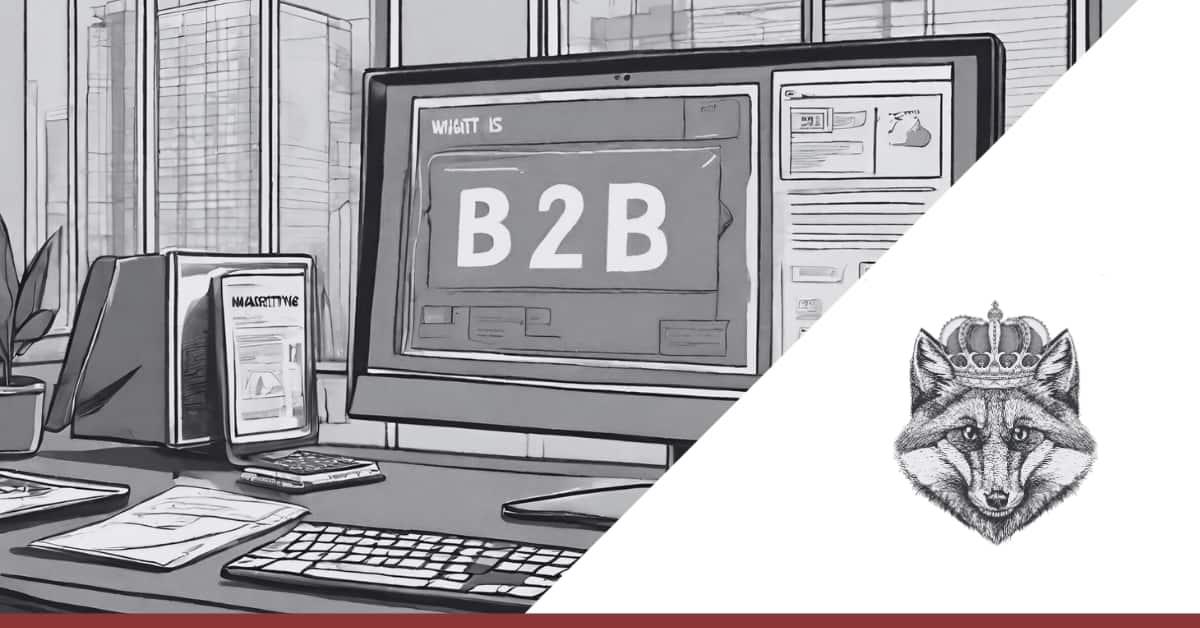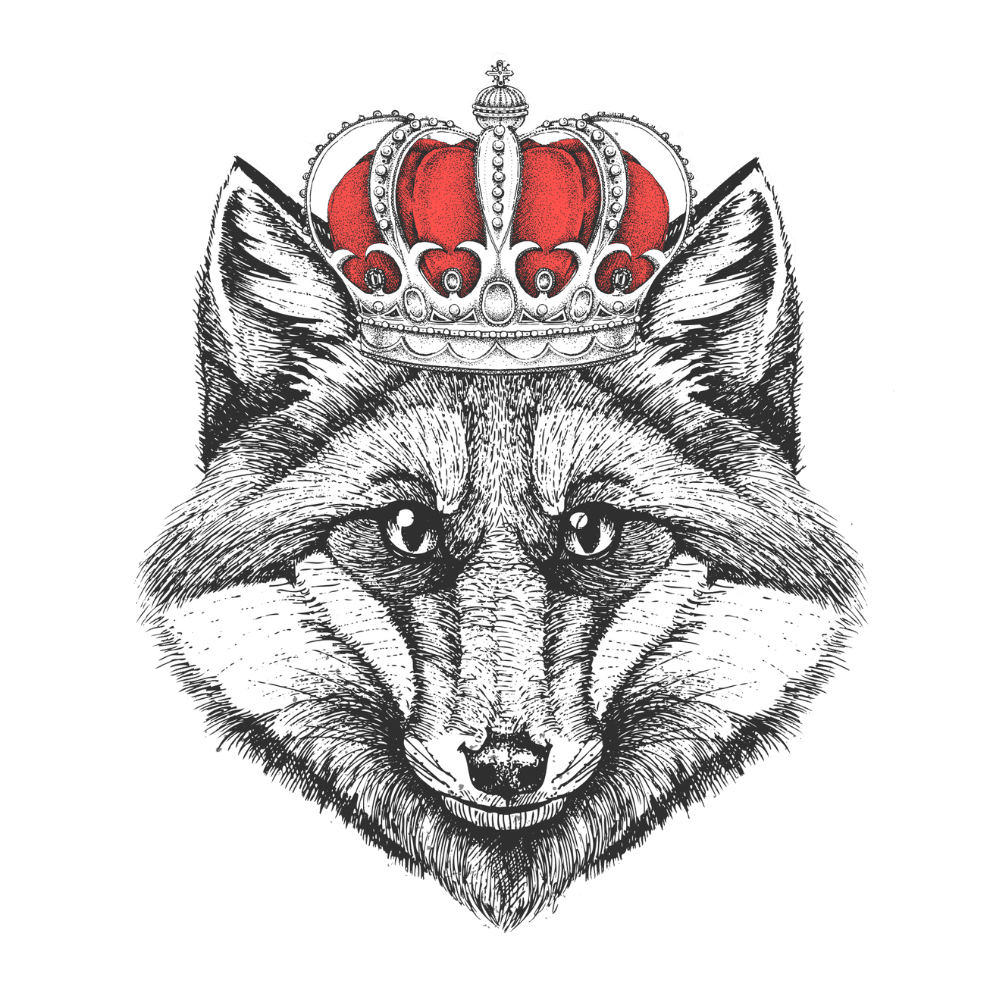B2B Marketing in a Nutshell
A Basic Guide in 3 Phases
Marketing is essential. But it’s hard to create a B2B marketing plan from scratch. You will find many blog posts on the subject and even more templates on how to create your strategy technically. But the essentials? Some advice briefly? That’s hard to get. Therefore, this article outlines the very basics to clearly lay out working principles. All marketing efforts can be categorized into three phases along the customer journey.
This is not your everyday marketing how-to-article. You will read about prospects, leads, and customers and the ingredients of a blueprint B2B Marketing plan.

3 Article Highlights
Table of Contents
Table of Contents
Newsletter
Subscribe and Learn B2B Marketing.
What is B2B Marketing and why you need a plan
Business-to-Business marketing includes all actions and processes to market and distributing a product or service to another company or organization. In other words, it is marketing directed at other businesses instead of directed at consumers (B2C marketing). In a classic definition, marketing aims at a specific target group and covers the “4Ps”: product/service, price, place/distribution, and promotion/communication. Want more details? Read this article for a deep-dive B2B Marketing Definition.
A marketing plan consists of a defined strategy and tactics to fill this strategy with life. Without a strategy, the best marketing tactics might be in vain. A strategy helps you to stay on track. However, tactics make sure to hit the market with your message. Both areas together are known as B2B marketing and build the backbone of your customer-oriented business. Not yet convinced? Here are some more reasons a marketing plan helps to increase turnover and helps you spend your budget wisely.
Three Marketing Phases
Basically, all marketing efforts can be sorted into three phases: finding, winning, and keeping a customer. In literature, you will find different models and frameworks on how to structure your marketing. The common ground is to focus on the customer journey. Naturally, the journey starts before the purchase, followed by the purchasing phase, and ends after the sales were made. The “before”, during” and “after” phase of a purchasing decision has three stages:
- Before the Purchase: Prospect
- During the Purchase: Lead
- After the Purchase: Customer
This basic principle is also true for B2B marketing. Although there are severe differences between B2B and B2C Marketing, this basic principle holds true for both types of marketing. Each phase is marked by distinct start and end criteria. Therefore, the targets, strategies and tactics are also different for each phase.
Your marketing plan needs to cover all three phases that build the backbone of your strategy.
Prospect, Lead, Customer
The abbreviation PLC is used to describe an ideal customer journey. From an unknown member of your target group through to a loyal customer. To get a better understanding, these examples describe a typical customer journey.
1. Prospect
A customer to be, before the purchase phase is called a prospect. A prospect is a member of your defined target group. A standard method to describe your target group is the “buyer persona” concept—a detailed description of your ideal customer. This phase aims to get into the prospect’s head. Your buyer persona most likely does not know your brand nor your product or service. Instead of spending money on branding (read this article to understand why this is a waste of money), create a super-specific marketing tactic to tackle your well-defined niche.
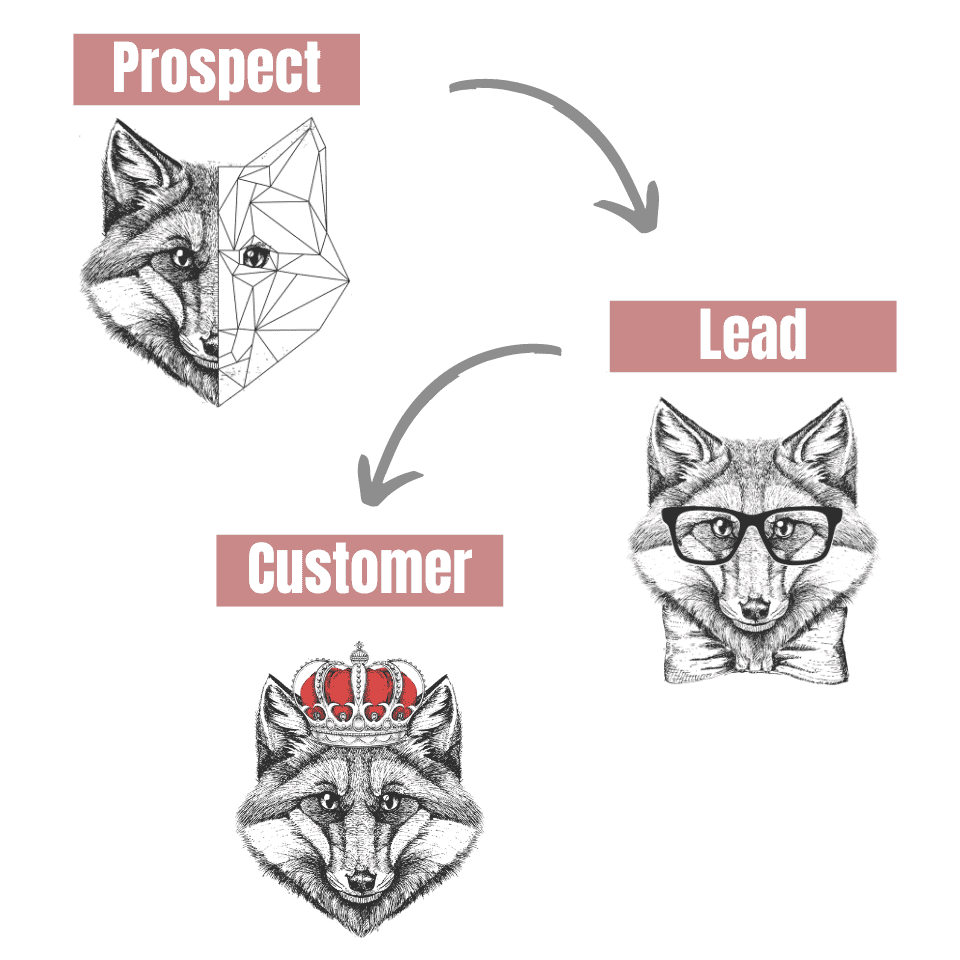
2. Lead
As soon as the prospect asks about your company, product or service, he enters the purchasing phase. His status changes from “Prospect” to “Lead”. All measures of this phase aim to nurture the lead and get as much information across as possible. This process is also known as Lead Management. This phase aims to make your lead a customer. Naturally, this transition happens with the purchase itself. Marketing efforts of this phase aim to inform the lead about the use and the Unique Selling Propositions (USPs) of your product. With this intention, you try to create trust and a positive benefit-cost-ratio. This phase aims to give the customer more than he pays for.
3. Customer
The short-term goal is to win a customer. The long-term goal is to keep a customer. The last phase of your marketing efforts intends to establish a long-lasting relationship with your client. Studies claim it is by far more resource-intense to win customers than to keep them. Further, a happy client will share his experience with other members of your target group. The principle of word-of-mouth is the best way to achieve positive branding without spending millions on advertising.
These three phases are the backbone and logic structure of marketing efforts. Thus, build your B2B marketing plan upon them.
Marketing Plan Blueprint
Here are the ingredients you need to craft an actionable, output oriented, and measurable marketing plan:
- Three phases of marketing
- Marketing Strategy
- Marketing Tactics
- Mathematics
The three phases of marketing are the outline and your marketing efforts. The marketing strategy, derived from the business strategy, sets the scene. Marketing tactics fill the strategy with life and help it hit the market. Finally, mathematics is necessary to measure Key-Performance-Indicators (KPIs) to prove your marketing successful.
Correspondingly, you need to design marketing that tells the right people the right message via the right channels. The right people are your target group. The right message is your USP. The right channels are your multi-channel marketing mix.
The next steps to your ultimate B2B Marketing
The above may seem simple, but make sure to understand the big picture these basic principles describe. No detailed marketing plan, content marketing, marketing channel mix, social media concept, Google Ads campaign, lead management process, or conversion rate will succeed if the above basics are not applied.
The sheer endless possibilities of modern marketing are a considerable risk to the marketing of industrial companies. The likelihood of failure increases with every option to spend money. Therefore, craft your B2B marketing step by step.
These articles will help you to do so.
Summary
Marketing is essential for business success. This holds true for B2C Marketing and even more so for B2B Marketing. Not because of shiny ads, but due to a way of addressing your daily work. A marketing strategy written down in a marketing plan helps to understand the customer’s journey. From being a prospect, on the lookout for a solution to his problem, to a lead that needs to be nurtured and finally is convinced to buy. Ultimately, you want a loyal customer who continues to do business with you.
To master your B2B Marketing, you need these ingredients:
- Understand the three phases of marketing: Prospect, Lead, Customer
- A marketing strategy derived from business goals
- Your actionable marketing tactics to achieve your marketing goals
- Mathematics to play and understand the game of big data and KPIs
Stephan Wenger
B2B Marketing Expert, Editor and Marketing Management Consultant
Stephan Wenger is a seasoned B2B Marketing Expert with more than 10 years of experience in leading global companies. His extensive expertise lies in the realms of B2B online marketing, content marketing, strategic marketing, and driving synergy between sales and marketing, including effective lead management.
You May Like the Following Articles
B2B vs B2C
B2B, or “Business-to-Business,” and B2C, or “Business-to-Consumer,” refer to different market types. The difference lies in the customer you sell to. This article defines both market types and shows the differences between B2B and B2C markets, customers, marketing, eCommerce, and product management. Including examples of B2B and B2C companies.
Industrial Marketing
Industrial marketing is all actions and processes to market a product or service to another company. In other words, it is marketing directed at other businesses instead of directed at consumers. To fully understand marketing for industrial goods, this article covers a definition, characteristics, strategy and examples of industrial business marketing.
What is B2B Marketing? A Definition
Welcome to B2B Marketing, where businesses sell to other companies rather than individual consumers (B2C). But what exactly is B2B Marketing? How does it differ from its counterpart, B2C marketing? This article covers a 7-step approach to creating your B2B marketing strategy, including the marketing mix and different marketing channels. We also show examples of existing, real-world business marketing strategies and tactics.
